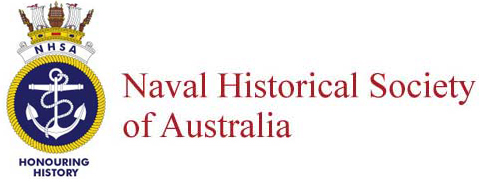- Author
- Feasey, Geoff
- Subjects
- History - general, Ship design and development
- Tags
-
- RAN Ships
- None noted.
- Publication
- June 1996 edition of the Naval Historical Review (all rights reserved)
Naval Attitudes
Isolated incident and ancient history? No way! In the late nineteen forties a significant number of RN officers had an attitude which could be summarised as “Thank goodness that bloody war is over. Now we can get back to being a real navy”. That meant getting rid of those awful “hostilities only people” and concentrating on scrubbing teak, polishing brightwork, bugles, bands, regattas and CTPs. There seemed little recognition of the failures of the navy to introduce and become competent in the technical machines of war. If that sounds a bit obscure, just think about the possible different course of Fleet Air Arm history if the Swordfish had been replaced in the late ‘thirties by a monoplane based on the Supermarine Schneider Trophy winner! And Admirals conducting Admiralty Interview Boards certainly appeared to think that anyone who preferred life as an engineer to “left hand down a bit” on an open bridge in a north Atlantic gale was more than a bit odd.
The nineteenth and early twentieth centuries left us a legacy of naval attitudes which, even at the most innocent level, resulted in ship and weapon designs which failed to give seagoing men reasonable living conditions, and which at worst lost engagements and cost many lives. The latter type of failure is well known, is probably best typified by the loss of HMS Hood, and we need not dwell upon them.
We probably know less and think less about the poor living conditions which made life uncomfortable, unnecessarily, for the ship’s companies of some small ships during World War 2. The misery of service in Flower Class corvettes in rough weather is a good example, well documented in fiction and in Monsarrat’s autobiography, both of which sit well with my brother’s account of his service as an AB in HMS Freesia. There does not appear to have been any technical reason why the galleys should not have been better sited so as to ensure that food reached the forward messes hot as often as the ships’ motions permitted. Autobiographical writing also illuminates the inadequacies of other classes of ships, particularly with reference to the effects of cold on fighting efficiency during convoys to Russia, as, for example. in J.W.P. Mallalieu’s “Very Ordinary Seaman.”
Technology Vs Entrenched Attitudes
In the early 1950s, the RN acquired its first post war new ships. Some impressive new technology, but it had not acquired the new attitudes needed to get the best out of them. The Daring Class gunnery system, Flyplane 3 is a good example. It was orders of magnitude more complex than anything which had gone before, and it was hoped, vainly as it proved to be, that it would be capable of defending ships against ever faster, jet propelled, attack aircraft. Having acquired the systems, the Fleet failed to allow its Ordnance Engineers the access they needed to achieve and maintain the maximum operational efficiency. At the time it was frustrating. With hindsight it seems completely incredible, that the spreading of awnings uniformly throughout the Fleet in harbour and other niceties could be regarded as more important than tuning ships’ main weapon systems.
Even more seriously from a different point of view it was more by good luck than good practice that no-one was killed when HM Ships Swiftsure and Diamond collided in the North Atlantic during exercise Mariner in 1953. It was a “dark and stormy night” and several hours passed before those of us in the escorting ships were sure that Swiftsure would not sink that night.
The basic reason for the collision is well known: an incorrect interpretation of a signal to re-orientate the screen. What I saw as an interested hanger-on in the ops room of HMS Decoy, the next ship to Diamond on the screen, was a close range radar display showing the two ships, almost certainly in each other’s ground clutter, converging. We all watched as the echoes merged, Captain, Navigator, ops room team and hangers-on. Radar had been in use for many years and the Decca Navigator which we were watching was an admirable set which could be described, quite fairly, as second generation radar technology. It was reliable, easy to use, with simple controls and a very clear display. The presence of our Captain in front of the display rather than on the bridge attests to his personal confidence in its value in hazardous situations. But no-one in the Admiralty, the Schools or the Fleet had thought to recognise its value by introducing voice radio procedures equivalent to the “You are standing into danger” flag signal.
My subsequent conversations with the Navigator, an experienced “long N”, failed to produce any convincing reason why not. His argument could be summarised as “An attempt to warn might cause more confusion and make the situation worse”. I hope our air traffic controllers never decide to follow that line. And as far as I know, the possibility that the costly collision might have been avoided by a timely warning on the voice net has not been discussed in any account of the action.
